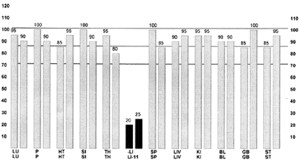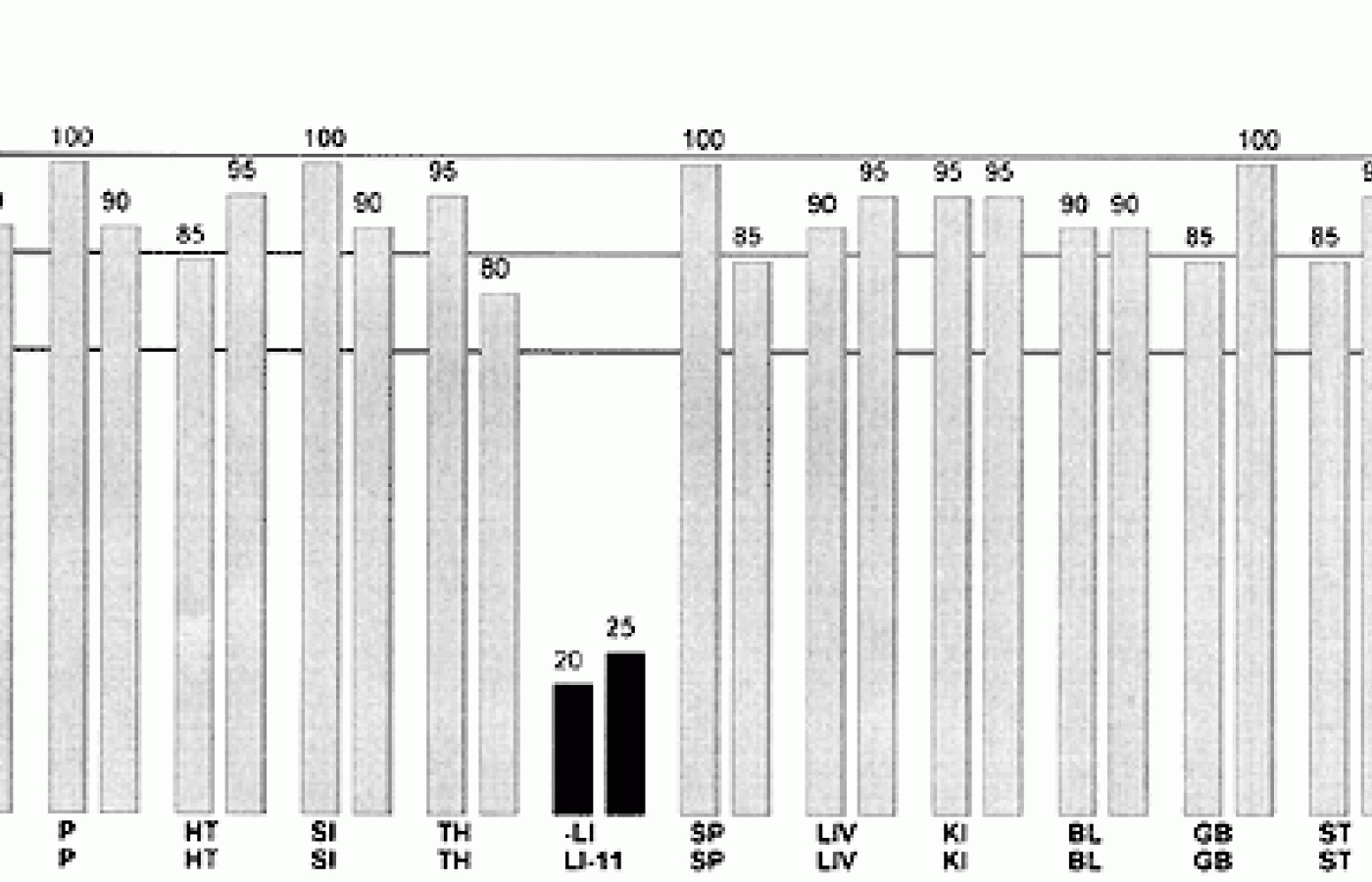Whether you accept it, avoid it or live somewhere in between, insurance coverage has become a defining issue for our profession. Patients increasingly expect to use their benefits, practitioners want to be compensated fairly for their time and expertise, and the system itself remains – at best – fragmented. The encouraging news is that coverage has expanded in meaningful ways. The challenging news is that reimbursement, across the board, remains inadequate.
Electro-Meridian Imaging: Case Histories
My article in the September 2002 issue of Acupuncture Today ("Contemporary Acupuncture Diagnosis: Electro-Meridian Imaging") created a tremendous amount of interest according to the sheer numbers of requests for further information received regarding this procedure. If you failed to see this article (or the importance of it), you can access the article by going to the "Columnists" section on AcupunctureToday.com and clicking on my previous articles.
I have personally used this procedure for diagnosis in acupuncture since I first learned it in 1973. Prior to that time, I practiced pulse and tongue diagnosis. Even though I was obviously a neophyte in 1973, electro-meridian imaging allowed me to practice at the level of an accomplished master. As pointed out in the article, I renamed this procedure from ryodoraku to electro-meridian imaging (EMI) in 1982.
In my previous article, I illustrated the procedure of EMI with a graph that could be utilized manually on a pre-printed form by simply adding all of the measurement figures of the yuan points together, than dividing by 24 to develop a base average. Establishing the normal range for each patient based on that formulation clearly shows which meridian is energetically involved. Again, I recommend you read the article from the September 2002 issue of AT for an explanation of the procedure.
One of the most exciting applications of EMI is without question the computer-enhanced version of the technique. The entire procedure with the computer takes less than two minutes to perform, and the information derived is landmark. Clinical responses using this diagnostic procedure are legendary. This article will focus on a few case histories illustrating the graphing from the computer enhanced EMI.
The following case histories are from my personal patient files. They are typical examples of the significance of this procedure. Please review the following case scenarios and the related EMI findings. This method of diagnosis can potentially be an incredible addition to your practice, regardless of your style of acupuncture.
Case History #1
The patient entered the office and filled out the preliminary medical history, along with the other entry forms, and proceeded to see me for consultation. During the consultation, I discovered the patient was referred to me for severe adult onset asthma. His situation was extremely grave, having been taking to the hospital on three separate incidences by ambulance. The patient, a 27-year-old male, had no prior history of asthma or respiratory distress except for sudden onset four years prior. He has seen numerous physicians. He reported extreme shortness of breath in the middle of the night specifically between the hours of 3:00-5:00 am, which is consistent with the horary cycle in the midday-midnight law of acupuncture.
Upon EMI examination, the patient tested virtually normal in all meridians with the exception of the large intestine meridian, which was pathologically depressed (see Figure #1). Upon further questioning, the patient stated that he wondered if the low large intestine meridian reading could be a result of his colostomy. Colostomy? There was no mention of a colostomy in his medical history form.
It was learned that the patient had been on a mission with his church in the outback of Australia and, due to an amoeba/parasite in the water, developed severe intestinal distress which ultimately led to the surgical removal of his large intestine and half of his small intestine. Following this discovery of his large intestine meridian involvement it was learned that his asthma developed within the first two weeks following his colostomy surgery. Based on the acupuncture principles, lung is paired with large intestine. What affects one could potentially affect the other. It was reasoned the patient's asthma could very well be caused by his extremely depressed large intestine meridian.
The treatment was extremely elementary, using the tonification point for the large intestine meridian (LI11) followed by the mu (alarm) point (ST25) and the shu (associated) point BL25. No treatment was geared for his lung as either an organ or meridian. The entire treatment revolved simply around his large intestine meridian as discovered by the EMI examination.
The patient was given two treatments and re-graphed, at which time the EMI graphing showed a correction of the problem. The patient remained in my care, receiving maintenance-type treatments four times a year with routine EMI examinations twice a year. He remained a patient for eight years, at which time he relocated to another city where we eventually lost track of him. In the eight years of followup care, he never experienced another asthma attack or so much as even shortness of breath. He was virtually asymptomatic following the second treatment.

Case History #2
The patient was a 65-year old female who suffered extreme femoral nerve neuritis for the past three years. She was unable to walk more than 7-10 steps without severe disabling pain. The patient was referred by a physician in another state in the hopes that acupuncture could bring about a clinical response. The patient had undergone extensive physiotherapy and six months of chiropractic care. She was under the care of both a neurologist and an orthopedist, who prescribed a variety of medications which the patient stated had little, if any, effect.
During the EMI examination, it was learned that the patient had gallbladder surgery just prior to the onset of the condition. She returned for a second surgery to surgically remove scar tissue that had apparently formed as a result of the first surgery.
The patient was treated according to the protocols set forth in the EMI examination to tonify the liver with Liv8; to sedate the bladder by using Bl65; and to tonify the gall bladder by using GB43. She was further treated with laser beam stimulation directly to the abdominal scar tissue. Her debilitating pain was completely and permanently resolved. She received two treatments from me and was referred to her local practitioner for followup care.
Every Christmas, I receive a special card from this patient thanking me for acupuncture.

Case Histories #3 and #4
The following case histories shared precisely the same symptomatologies of severe panic attacks. Both of these cases also shared very common findings, making their condition seem almost exactly the same. They both had very dramatic stories of severe, disabling panic attacks. Neither of them could leave the house to perform simple tasks like running to the grocery store or picking up the kids after school without grave consequences. They were both confined to their home. The sheer thought of going out of the house was overwhelming.
On EMI examination, each of these individuals, even though their symptoms were practically identical, showed complete polar opposites of the graph. As one can see, one graph showed a very depressed pericardium, heart, small intestine and triple heater meridian, whereas the other patient's graph showed each of those same meridians to be very elevated.
The rule in EMI evaluation is likened to the line from the fairy tale Goldilocks and the Three Bears: "This bed was too hard; this bed was too soft; and this one was just right," meaning it makes little difference if the meridians are too high or too low. The clinical significance is if they are involved.

Just as one may tune a radio dial to 94.5 for a clear station, both 94.6 and 94.4 will each broadcast nothing but static. There is nothing wrong with the radio, just something wrong with the fine-tuning. Please note the meridians comprising the Fire element are all involved. This is a classic finding for panic attacks. This condition is very responsive to acupuncture when balanced.

I have thousands of interesting cases in my patient files I would love to share with you; however, as you are aware, space in this publication is at a premium. For further information on electro-meridian imaging, drop me an e-mail at the address below. Best Wishes!



